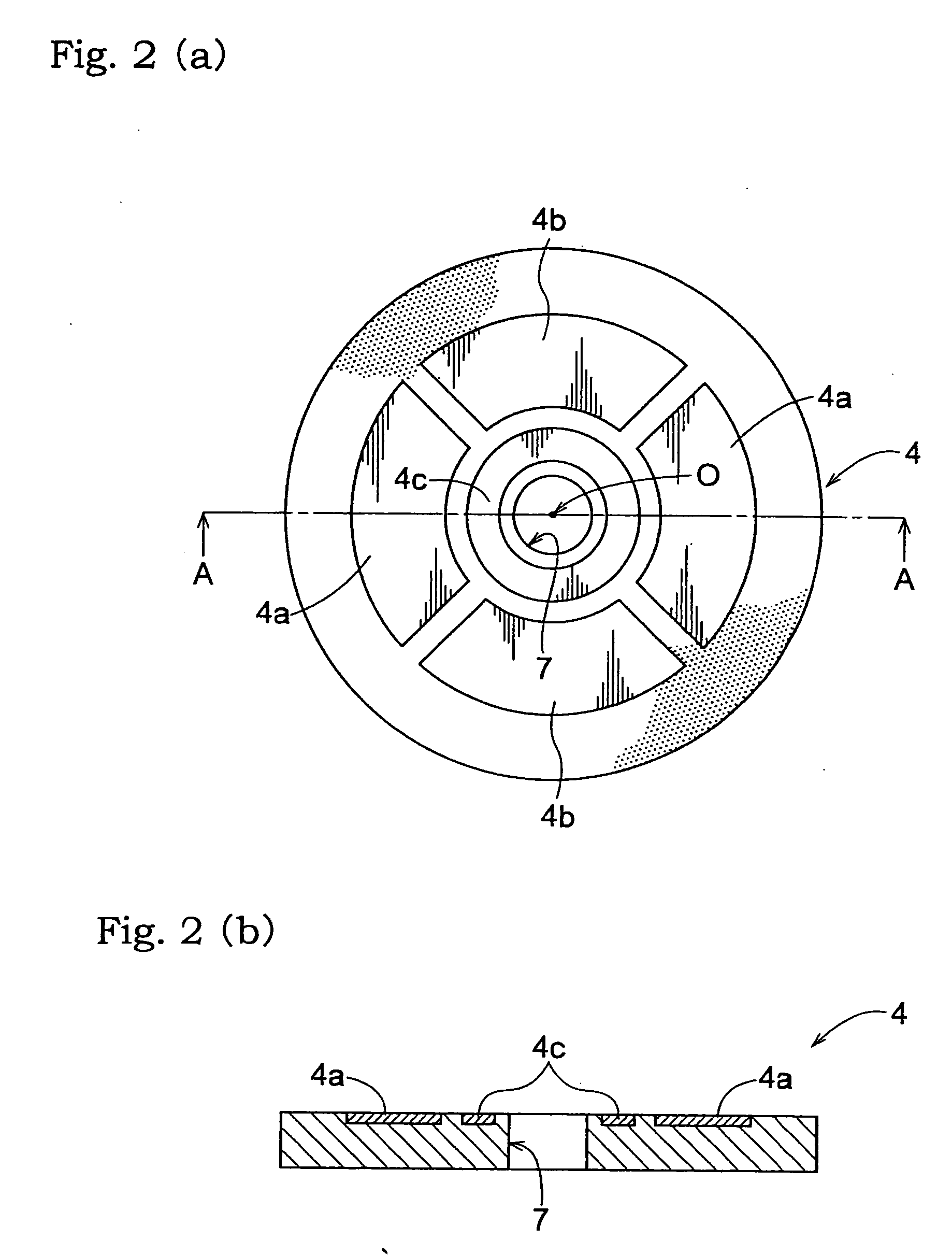Acceleration sensor
a sensor and acceleration technology, applied in the field of acceleration sensors, can solve the problems of sensor shock resistance reduction in the time of sensor falling, unanticipated power supply, and undesirable electrical improvement, so as to improve the shock resistance, and improve the effect of width
- Summary
- Abstract
- Description
- Claims
- Application Information
AI Technical Summary
Benefits of technology
Problems solved by technology
Method used
Image
Examples
Embodiment Construction
[0038] A preferred embodiment of the acceleration sensor according to the present invention will be described hereinafter with reference to the drawings.
[0039] The acceleration sensor according to the invention includes a conductive case of channel-shaped section having a bottom at one end, and an opening at the other end, and a capacitance detecting mechanism of the electret condenser microphone (ECM) type mounted in the case as shown in FIG. 1. As shown in FIG. 1, the sensor has a push-pull type construction including an electrode substrate pair having two electrode substrates 4, each with fixed electrodes arranged on one surface, covered by an electret layer 1, and opposed to the fixed electrodes on the other substrate 4, a diaphragm 2 acting as a movable electrode held between the electrode substrate pair by spacers 5 for providing a predetermined distance from the electrode substrate pair, and a weight 3 attached to the diaphragm 2 with the center of gravity of the weight 3 co...
PUM
 Login to View More
Login to View More Abstract
Description
Claims
Application Information
 Login to View More
Login to View More - R&D
- Intellectual Property
- Life Sciences
- Materials
- Tech Scout
- Unparalleled Data Quality
- Higher Quality Content
- 60% Fewer Hallucinations
Browse by: Latest US Patents, China's latest patents, Technical Efficacy Thesaurus, Application Domain, Technology Topic, Popular Technical Reports.
© 2025 PatSnap. All rights reserved.Legal|Privacy policy|Modern Slavery Act Transparency Statement|Sitemap|About US| Contact US: help@patsnap.com



